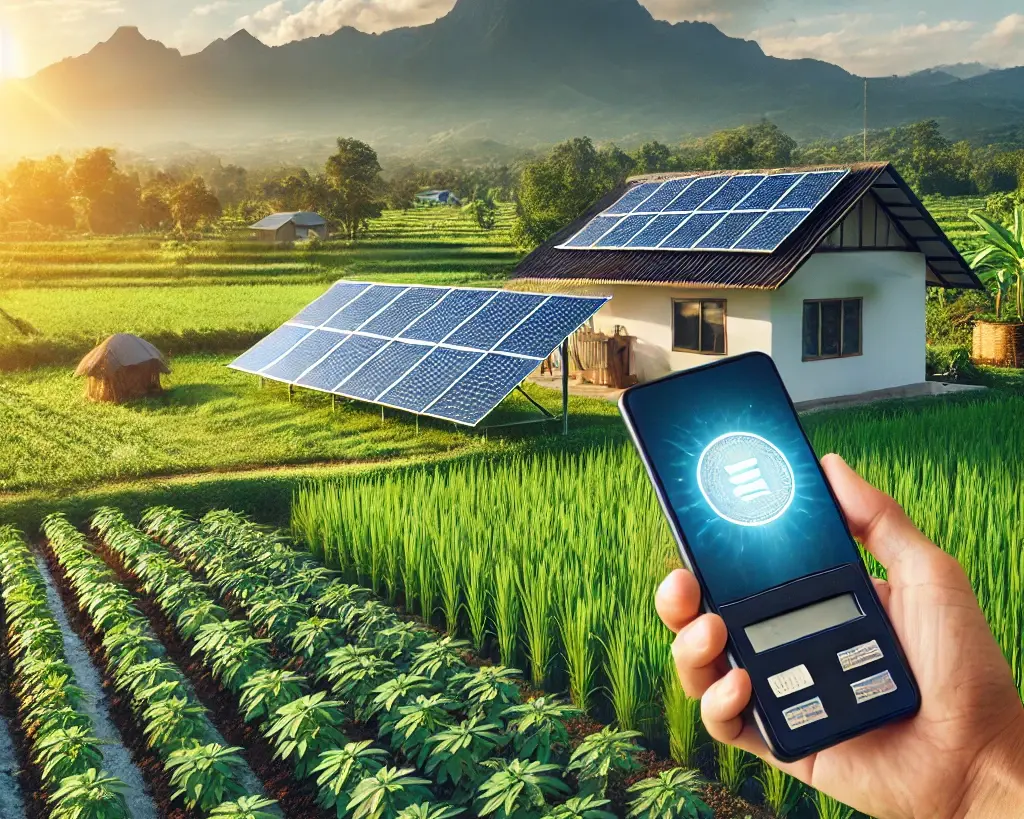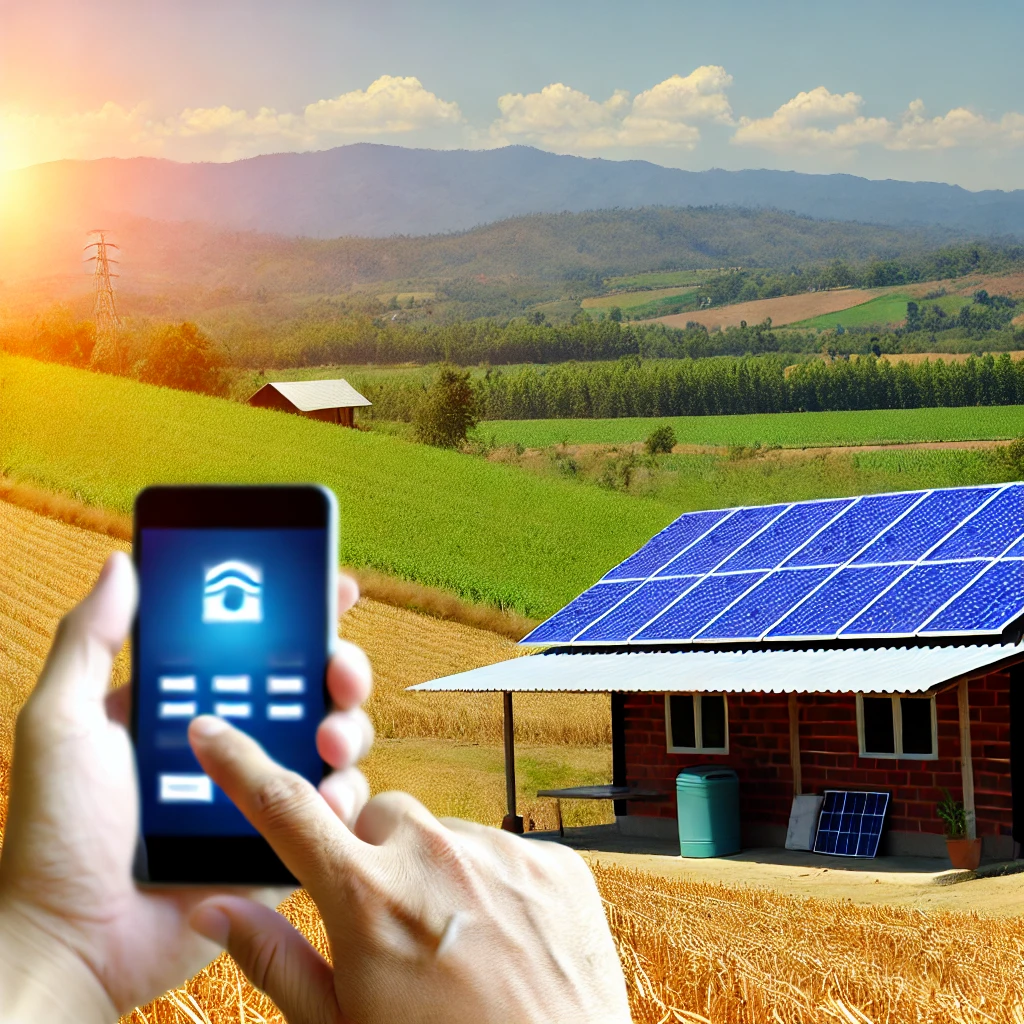How Fintech Innovations are Making Solar Energy Accessible
The global transition to sustainable energy has brought solar power to the forefront as a clean, renewable solution. However, the initial costs of solar installation often pose a barrier, limiting widespread adoption—especially in emerging markets. Fintech, with its transformative financial solutions, is stepping in to address this accessibility gap. By developing new financing models, utilizing blockchain technology, and leveraging digital marketplaces, fintech is helping break down the barriers to solar adoption.

One of the main obstacles to solar accessibility has traditionally been financing. Solar panel installations involve a significant upfront investment, which can be a deterrent even for environmentally conscious homeowners. Fintech companies are creating innovative models to make this investment more manageable, giving individuals and businesses access to cleaner energy without heavy financial burdens. Solutions like Pay-As-You-Go (PAYG) plans, crowdfunding for solar projects, and green loans are increasingly making solar energy affordable.
For those considering solar energy, options have also broadened with growing online access to high-quality solar products. Today, anyone interested in affordable energy can find a range of products and solutions, including “solar panel for sale – A1 SolarStore.” This trend showcases how accessible solar energy has become, with digital storefronts and fintech-backed solutions making it easier for consumers to explore options and make informed purchases.
The Intersection of Fintech and Solar Energy
Fintech, which has traditionally focused on improving financial access and convenience, is now playing a pivotal role in the renewable energy sector. By offering diverse financing options, payment models, and digital tools, fintech helps consumers and businesses navigate the financial aspects of solar adoption more easily. This convergence is particularly impactful in markets where traditional financial services have limited reach, such as parts of Africa, Asia, and rural America. Through innovative solutions, fintech is helping make solar energy both affordable and accessible to a wider audience.
For investors, this alignment between fintech and solar energy also represents new opportunities. Solar financing initiatives are attracting interest from individuals and institutions looking to support green energy projects while diversifying their portfolios. The expansion of fintech-backed solar solutions is thus contributing not only to environmental goals but also to economic growth in emerging sectors.
Innovative Financing Models for Solar Energy
One of the most direct ways fintech is expanding solar energy access is through new financing models tailored to reduce the high upfront costs of solar installations. These models include Pay-As-You-Go (PAYG) systems, crowdfunding platforms, and green loans. Each of these offers flexible, consumer-friendly ways to finance solar energy systems.
Pay-As-You-Go (PAYG) Systems
PAYG has revolutionized solar accessibility, especially in low-income regions where financial constraints are a barrier. PAYG models, used by companies like M-Kopa and Greenlight Planet, allow customers to pay for solar energy in installments, using mobile money platforms for convenience. This method lowers the initial investment and makes solar energy a viable option for households that may not have access to traditional financing.
The PAYG model’s success is largely due to the rise of mobile payments, which are widespread in emerging markets. By allowing customers to purchase solar energy over time rather than requiring an upfront lump sum, PAYG systems democratize solar energy access.
Crowdfunding Platforms
Crowdfunding has also become a popular means of funding solar projects, enabling individuals to invest directly in green energy initiatives. Platforms like Mosaic, based in the U.S., and Trine, popular in Europe, connect everyday investors with solar projects, democratizing the investment landscape for clean energy. Through crowdfunding, fintech platforms reduce the need for high capital from a single entity, allowing communities and businesses to contribute toward building sustainable energy infrastructure.
Crowdfunding platforms offer transparency and flexibility for investors, making it easier for them to support projects that align with their values. The result is a win-win: solar projects gain access to needed capital, and investors have a way to support green energy initiatives while potentially earning a return.
Green Loans and Solar Financing Options
Traditional financial institutions are recognizing the growing demand for sustainable energy and are offering green loans as a way to support solar adoption. These loans come with favorable terms—such as lower interest rates or extended repayment periods—to make it easier for consumers to install solar systems. Fintech platforms streamline the loan application and approval process, often connecting customers directly to green loan options.
Green loans are particularly appealing to homeowners and small businesses that want to install solar panels without a large upfront cost. For example, some banks offer interest-rate discounts for green home upgrades, including solar installations. This ease of access is crucial in encouraging broader adoption of solar energy.
Leveraging Technology for Solar Accessibility

In addition to innovative financing, fintech is utilizing advanced technologies like blockchain, digital marketplaces, and mobile payments to streamline solar adoption. Each of these tools addresses a different challenge, from energy trading to simplifying consumer choices.
Blockchain: Enabling Secure and Transparent Energy Transactions
Blockchain technology is transforming solar energy by creating secure, decentralized platforms for energy trading and financing. In regions with unreliable central power grids, blockchain allows communities to form microgrids, where households with solar panels can sell excess energy to their neighbors. This peer-to-peer (P2P) energy trading model fosters self-sustaining energy ecosystems and helps stabilize power supply in remote areas.
Beyond energy trading, blockchain is used to facilitate financing through microloans. Platforms that utilize blockchain ensure that transactions are transparent, verifiable, and secure, which builds trust among investors and consumers alike. For instance, WePower in the Baltic region has created a blockchain platform where consumers can pre-purchase energy directly from producers, enabling a more direct and cost-effective energy relationship.
Digital Marketplaces: Simplifying Solar Choices
Digital marketplaces for solar products are making it easier for consumers to explore, compare, and purchase solar solutions. Platforms like EnergySage in the United States offer tools to compare solar providers, financing options, and installation packages. By gathering all options in one place, these marketplaces empower consumers to make informed decisions without needing extensive technical knowledge.
For example, a homeowner interested in solar can use these platforms to compare the costs of various providers, review financing plans, and understand installation requirements. This streamlined process demystifies solar energy, making it more approachable for a wide range of consumers. Digital marketplaces enhance transparency and foster competition, which ultimately drives down prices, benefiting consumers.
Mobile Payments and Digital Wallets: Expanding Solar Access in Emerging Markets
Mobile payments have been a game-changer in extending solar access, particularly in regions without extensive banking infrastructure. Digital wallets and mobile money platforms, such as M-Pesa in Kenya, allow consumers to pay for solar energy in small, manageable increments. This payment model aligns well with PAYG systems, which let users pay only for the energy they consume.
Digital wallets provide flexibility and accessibility for consumers, who can make payments directly from their mobile phones. This convenience is critical in rural and underserved areas, where financial flexibility is essential. By offering easy payment solutions, fintech is helping overcome financial barriers to solar energy, making it accessible to households that otherwise might not be able to afford it.
Case Studies of Fintech-Driven Solar Initiatives
Real-world examples illustrate the transformative impact of fintech on solar energy accessibility. Below are a few notable fintech-driven initiatives that highlight the potential of these innovations to bring clean energy to more communities.
| Project/Company | Region | Fintech Innovation | Impact |
|---|---|---|---|
| M-Kopa | East Africa | PAYG & Mobile Payments | Brought solar access to rural households |
| Trine | Europe & Africa | Crowdfunding | Enabled investments in small solar projects |
| EnergySage | United States | Digital Marketplace | Simplified solar purchasing for consumers |
| WePower | Baltic Region | Blockchain-based Energy Trading | Facilitated P2P energy transactions |
These projects underscore the scalability and adaptability of fintech solutions in diverse regions, demonstrating the potential for fintech innovations to impact global energy patterns.
Future Prospects for Fintech in Solar Energy
The integration of fintech and solar energy is still in its early stages, and there is substantial potential for future developments. Emerging trends in artificial intelligence (AI) and machine learning, for instance, could allow fintech platforms to offer even more customized solar financing solutions based on consumer behavior and regional energy consumption patterns. As AI technology improves, it will also become possible to optimize energy management in microgrids and other decentralized energy systems, creating even greater efficiency.
The continued evolution of fintech in solar energy may also see increased involvement from both public and private sectors. Governments worldwide are increasingly supportive of renewable energy projects and may introduce further incentives or regulatory frameworks that encourage fintech investments in solar. The result could be a synergistic effect, where government backing amplifies the reach of fintech solutions, making solar energy a truly global resource.
Conclusion
Fintech innovations are revolutionizing the accessibility of solar energy by breaking down financial, logistical, and technical barriers. Through PAYG systems, crowdfunding, blockchain, and digital marketplaces, fintech has created pathways for a wider range of consumers and investors to participate in the solar revolution. As technology advances and interest in sustainable energy grows, the collaboration between fintech and solar energy will continue to shape a cleaner, more inclusive energy future.
FAQs
1. How does fintech make solar energy more accessible?
Fintech makes solar energy more accessible by introducing innovative financing models like PAYG and crowdfunding, which reduce upfront costs. Additionally, blockchain, digital marketplaces, and mobile payments make it easier for consumers to afford and manage solar energy.
2. What are PAYG systems in solar financing?
PAYG, or Pay-As-You-Go, is a financing model that allows consumers to pay for solar energy over time rather than making a large upfront payment. This model is popular in regions with limited access to traditional banking services.
3. How does blockchain technology benefit solar energy adoption?
Blockchain enables secure, decentralized energy trading and financing for solar projects. It allows for peer-to-peer energy transactions, which can reduce reliance on traditional utilities and increase solar adoption in remote areas.
